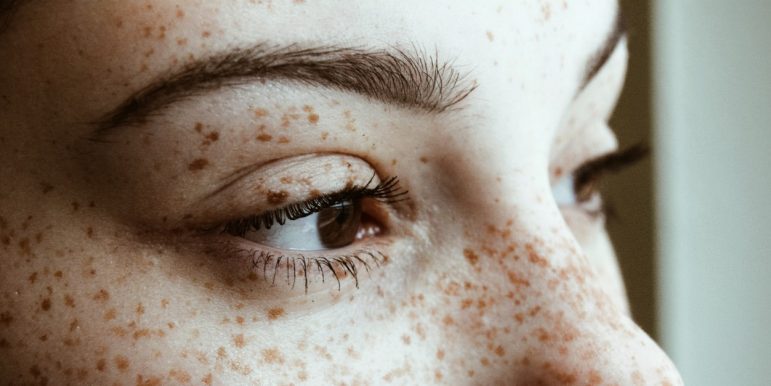
Is it colour blindness or colour vision deficiency?
People who are completely colour-blind only perceive their surroundings in shades of grey. Much more common than colour blindness, however, are colour vision deficiencies. We explain what the difference is and what types there are.
In fact, our environment is colourless. It's only when light waves hit our eyes and activate the cone cells within them that the corresponding colours are reflected. The cones exist in red, green and blue. Therefore, all the colours we perceive are a mix of these three. We naturally distinguish between the different colours. But about five percent of the world's population is unable to do so. People with colour vision deficiencies can't see individual colour tones well enough.
How do we see colours?
Our ability to see depends on two sensory cells in the retina:
- The rods distinguish between light and dark.
- We perceive colours via the cones.
In our eyes, there are red, green and blue cones. They react to a colour range of their own. They are stimulated by light of a certain wavelength. They convert this stimulus into an electrical impulse and transmit it to the brain. That's where we finally perceive colours.
What's the difference between colour blindness and a colour vision deficiency?
Colour blindness
In partial colour blindness, affected people don't perceive individual colours. For example, green colour blindness is called deuteranopia. If this happens, the green cones are non-functional or missing altogether.
With complete colour blindness – also called achromatopsia – people affected don't see any colours at all. They perceive their environment only in shades of grey. In most cases, the colour cones in the retina are completely absent. However, it can also be triggered by a disorder in the areas that are responsible for vision – for example, a damaged optic nerve or a damaged area of the brain.
There is no treatment for colour blindness at present. Researchers hope to find possible solutions with gene therapy in the future.
Colour vision deficiencies
Anyone suffering from a colour vision deficiency or impairment can only recognise individual colour tones to a limited extent. The cones in the retina are present, but some of them function incorrectly. Well-known colour vision deficiencies are a green deficiency (deuteranomaly) and a red deficiency (protanomaly). Men are more commonly affected than women. About 8 percent of men suffer from a colour vision deficiency. Less than 1 percent of women suffer such deficiencies.
Colour vision deficiencies are inherited in our genes via the X chromosome and are recessive. Therefore, they only develop if there is no additional, healthy X chromosome to compensate. A man has one X and one Y chromosome. If the defective gene is found on the X chromosome, the Y chromosome can’t balance out the defect. A woman, on the other hand, has two X chromosomes. If the same gene on one of her X chromosomes is healthy, it blocks out the defective one. She can therefore carry the defective gene and pass it on to her children, even if she does not suffer from a colour vision disorder herself. So a woman only becomes affected if both parents pass on a defective gene to her.
Different colour gene deficiencies
Red-green deficiency
People who have a red-green deficiency recognise the colours red and green at different levels of intensity. They either have a red deficiency (protoanomaly) or a green deficiency (deuteranomaly). Both vision deficiencies are based on genetics. Depending on the severity, those affected can distinguish the colours either more easily or less easily.
Professionals use what's called the pseudoisochromatic plate (PIP) test for diagnosis. In this test, the patient is presented with coloured plates (images), each showing numerous small circles that form numbers or figures. The colour of the background and the figure only differ in hue. Their brightness and saturation are the same. People with a red-green deficiency can’t recognise the number or figure.
At present, there isn’t any treatment for red-green deficiencies. Small deficiencies can be slightly improved by means of contact lenses or glasses with a coloured filter. On electronic devices, those affected can select the colours in their device's settings so that they can distinguish them easily.
Blue-yellow deficiency
Blue-yellow deficiencies are much less common than red-green deficiencies. People with blue vision impairment (tritanomaly) perceive colours in the blue-violet spectrum and have trouble perceiving the colour yellow. This type of vision deficiency is also usually genetically inherited. But retinal disorders, optic nerve disorders or cataracts can also weaken the ability to see the colour blue.
Just like with the red-green deficiency, medical professionals use pseudoisochromatic plates to make a diagnosis.
There is no medical treatment to completely cure these kinds of deficiencies. Contact lenses or glasses with a coloured filter are often used to offset small deficiencies. On electronic devices, those affected can select the colours in their device's settings so that they can distinguish them easily.

The expert provided the editorial team with advice and input for this article. Julia Pieh (doctorate in pharmacy and toxicology, pharmacist, naturopath) works in the Helsana Health Consultation Service.

Newsletter
Find out more about current health issues every month and get all the information you need about our attractive offers from all Helsana Group companies * delivered by e-mail to read whenever it suits you. Our newsletter is free of charge and you can sign up here:
We did not receive your information. Please try again later.
* The Helsana Group comprises Helsana Insurance Company Ltd, Helsana Supplementary Insurances Ltd and Helsana Accidents Ltd.